With the troops on the front taking priority, the equipment that did make its way to the SATC units was a mishmash, especially the rifles. For many units, like the one at the University of Virginia, soldiers initially conducted rifle drill without rifles. When SATC units did receive rifles, they could be sent either one of the standard issue rifles, the M1903 Springfield or the M1917 Enfield, or they could be issued the M1898 Krag–Jørgensen or the Imperial Russian M1891 Mosin Nagant. These four rifles were chambered in three different calibers and used different types of bayonets, cleaning rods, and slings which caused tremendous logistical issues for SATC Quartermasters, the Committee on Education and Training, and the War Department. Further complicating issues for SATC units, each rifle had a different manual of arms (the process of loading and firing a weapon), which made training more difficult. Below are some examples of the types of rifles used by SATC units as well as an example of a standard issue German rifle as a comparison.
A series of communications between the SATC unit commander at VMI and the CEST’s District inspecting officer about the number of rifles, bayonets, scabbards, and cartridge belts at VMI.1
US Model 1898 Krag–Jørgensen
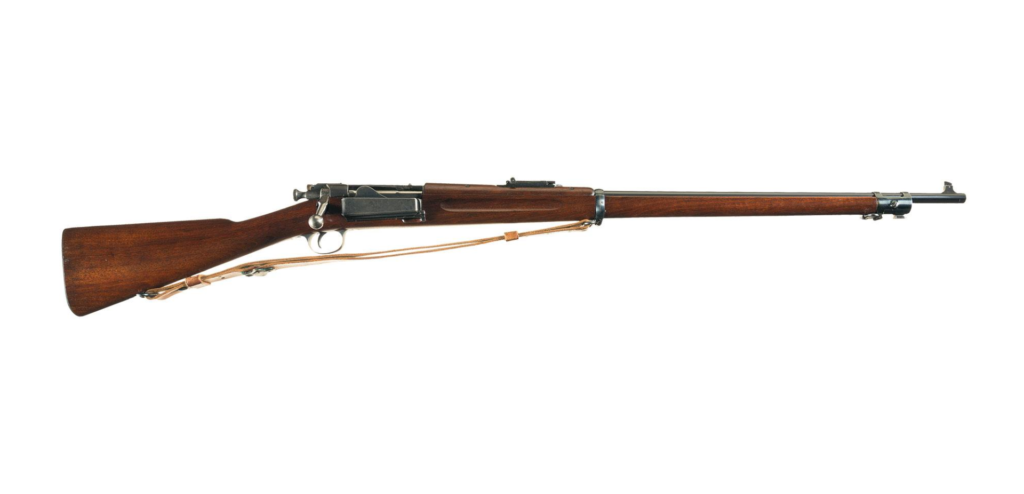
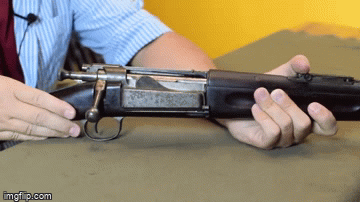
The Krag–Jørgensen was the first multi-shot rifle officially adopted by the United States military. Designed by two Norwegians and chambered in the .30-40 Krag cartridge, this rifle held five rounds and was loaded via a side swinging compartment.
The Krag–Jørgensen and its variants were used by American troops during the Spanish-American War, but after the encountering the Mauser M1893 rifles used by the Spanish, its deficiencies became apparent. The Spanish Mausers could be loaded via five round stripper clips and used a more powerful caliber than the .30-40 Krag.2
Right: Teddy Roosevelt and the Rough Riders after the Battle of San Juan Hill, circa 1898. Image Source: National Archives
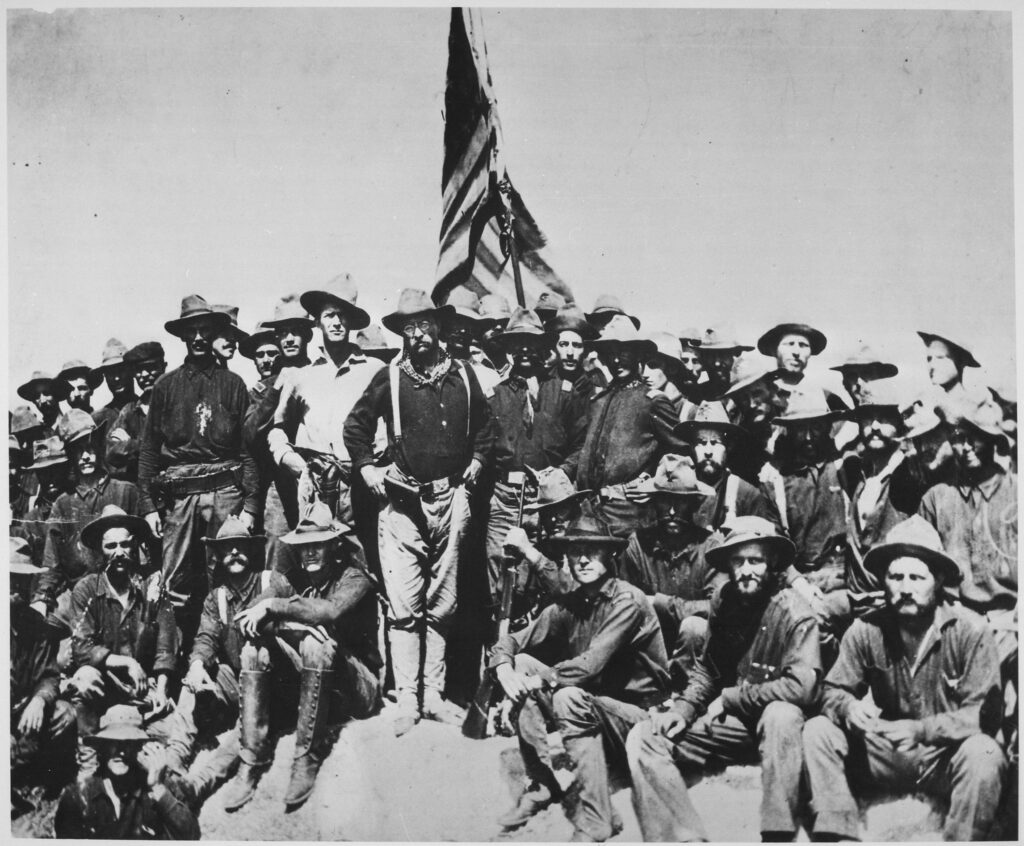
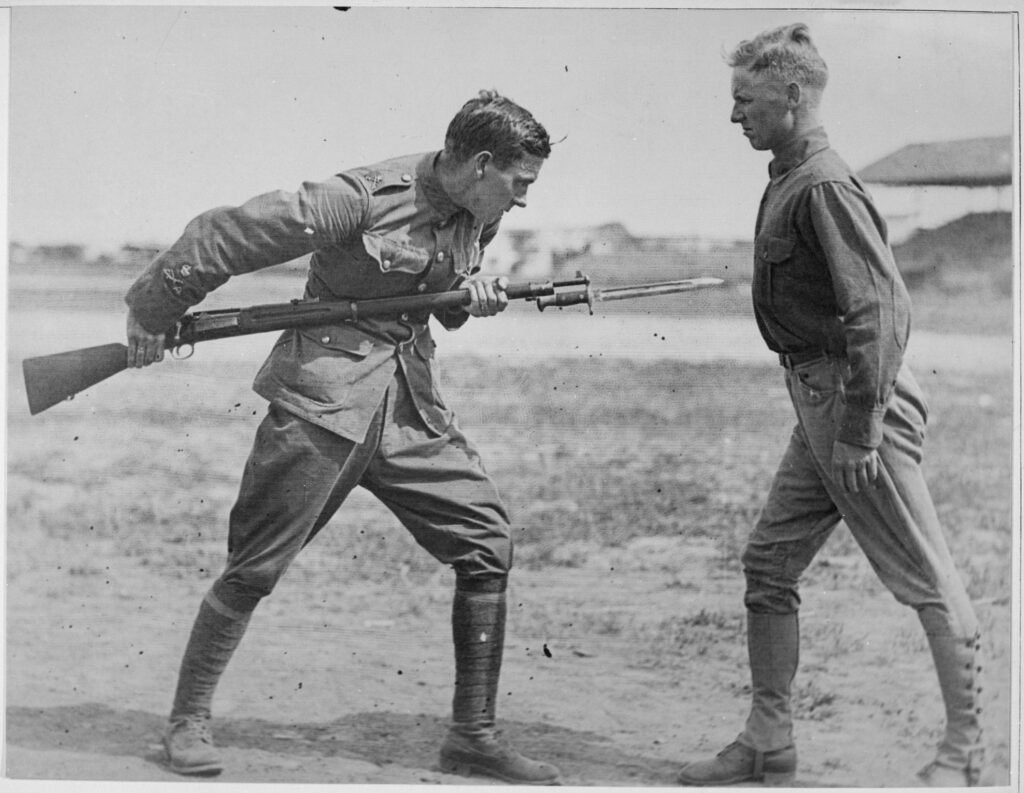
In 1903, the Krag was replaced by the M1903 Springfield, which was based on Masuer rifles. The Krag–Jørgensens were put into storage and when the United States entered World War I, they were brought back as training rifles. Of the various rifles used by SATC units, the Krag–Jørgensen was one of the most common.
Left: An American soldier is instructed in bayonet techniques by an English Sergeant Major using a Krag–Jørgensen, circa 1917/1918. Image Source: National Archives
U.S. Model 1903 Springfield
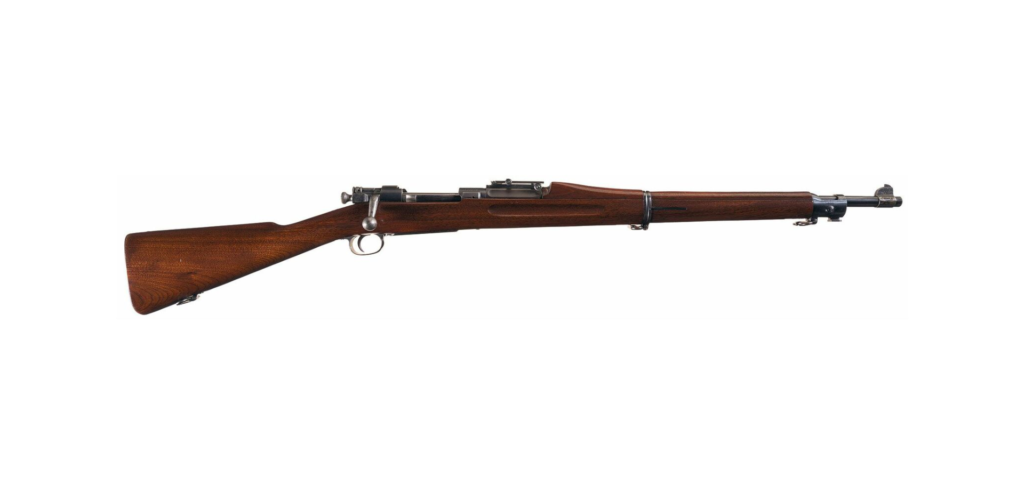
After encountering the Spanish M1893 rifle in the Spanish-American War, the U.S. Ordnance Department decided to look for a replacement for the Krag–Jørgensen. The M1903 Springfield was officially adopted by the U.S. Military in June, 1903.
Chambered in .30-06, a more powerful round than .30-40 Krag, with a five round internal magazine, the 1903 was a vast improvement over the Krag–Jørgensen. Additionally, the rifle can be reloaded using stripper clips, a thin piece of metal that holds five cartridges.
Right: A 1903 Springfield being reloaded with a stripper clip. GIF Source: Shooting USA YouTube Channel
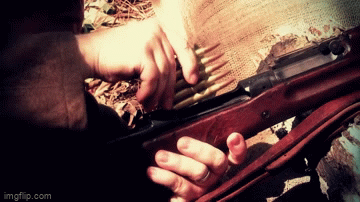
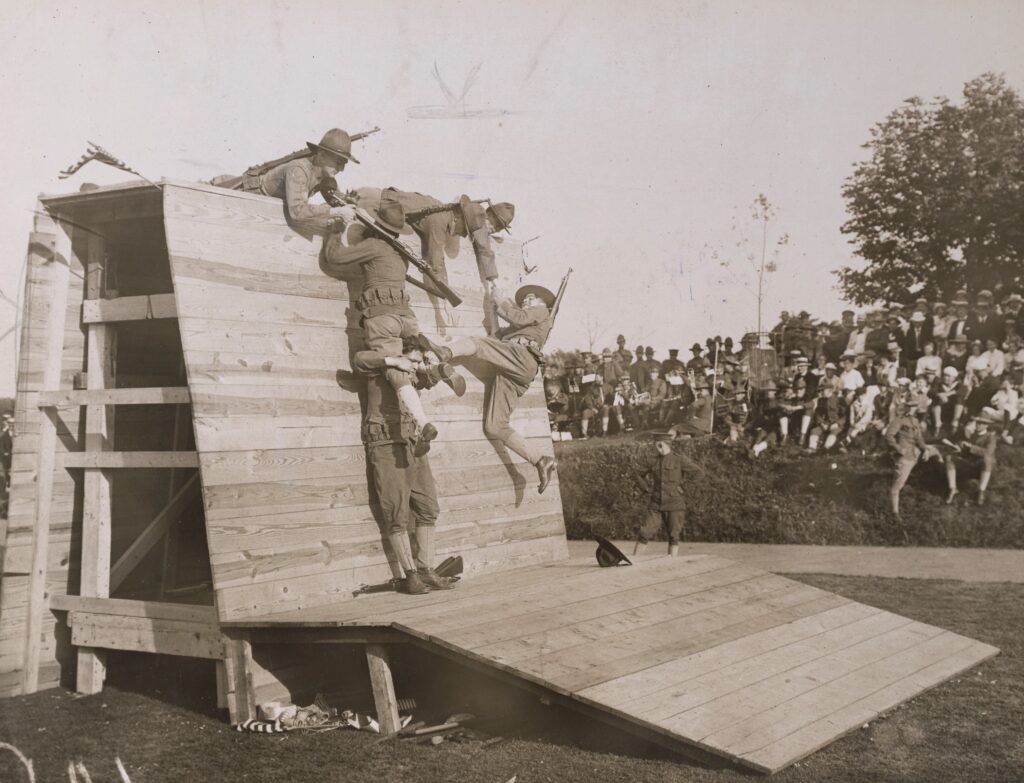
When the United States entered World War I, they did not have enough M1903s to fully supply the rapidly expanding army. Production of the rifle would continue throughout the war, but they were primarily sent to troops in Europe and training camps. While a few may have made it to SATC units, other rifles were more common.
Soldiers with M1903s demonstrating wall climbing techniques to an audience on Travers Island, NY, exact date unknown. Image Source: National Archives
Special thanks to Mr. Woody Harrison for allowing his 1903 rifle to be used as the basis for this model.
U.S. Model 1917 Enfield

The M1917 was adopted shortly after the U.S. entered the First World War since it lacked the necessary number of M1903s to fully equip its rapidly expanding army. Based off of the British P14 rifle, the M1917 is chambered in .30-06 and holds six rounds in its internal magazine. Like the M1903, the M1917 can be loaded via stripper clips.
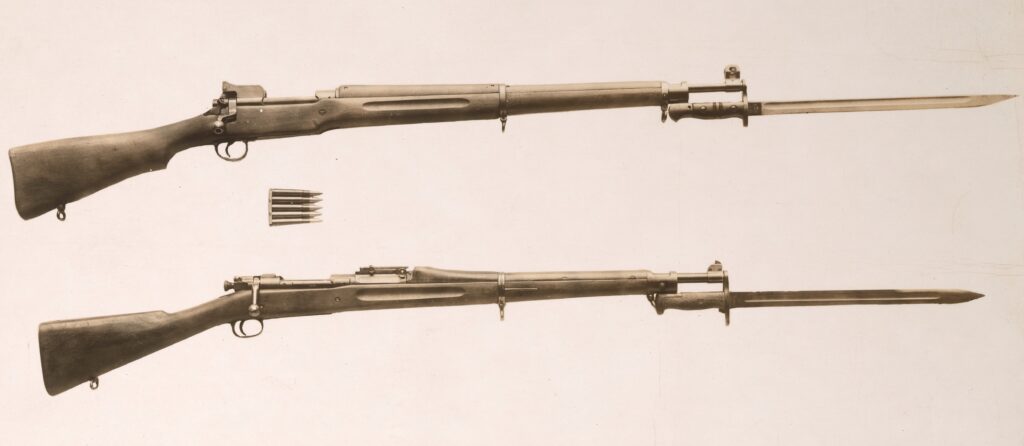
American firearms manufacturers Remington, Winchester, and Eddystone had been contracted in 1914 and 1915 by the British Government to produce the P14 , but the U.S. Government ended the contracts so the M1917 could be produced for the American Expeditionary Force (AEF). These three companies would continue producing the M1917 for the American Government throughout World War I.3
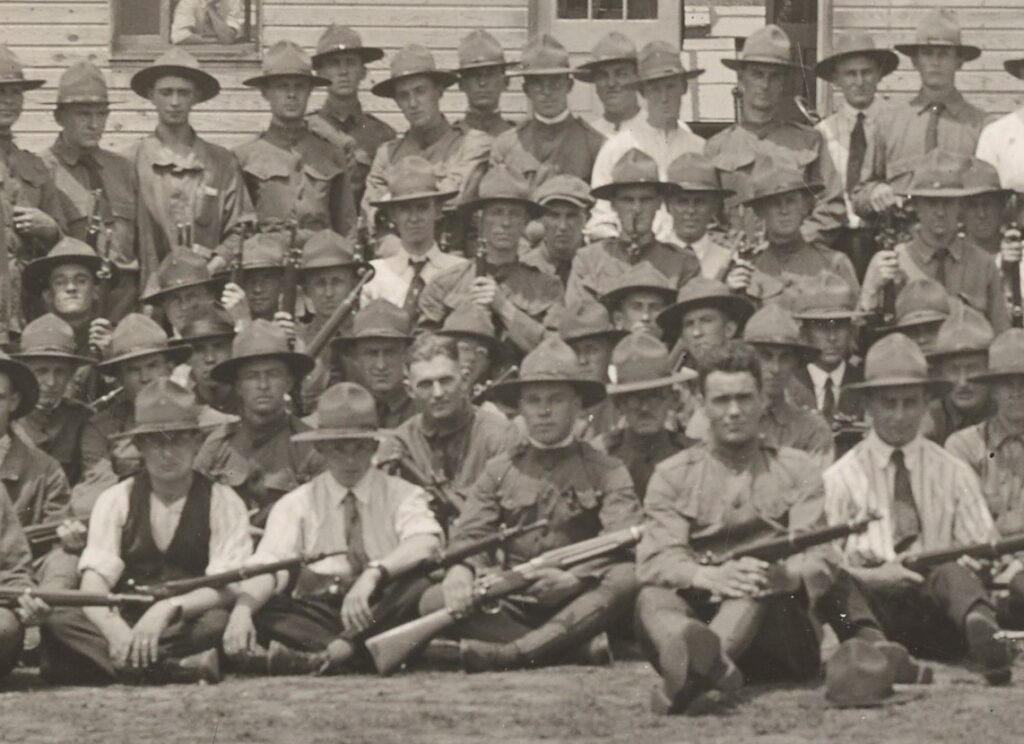
By the end of the war, most American troops were equipped with the M1917 rather than the M1903. M1917s were also used by SATC units in large numbers, as shown through War Department memos, which refer to the rifles as “Rifles, Winchester.” The M1917 was the primary rifle used by the SATC unit at William & Mary.4
Left: Members of the UVA SATC B Section, A Company after military training with M1917s. Image Source: National Archives
U.S. Contract Imperial Russian Model 1891 Mosin Nagant
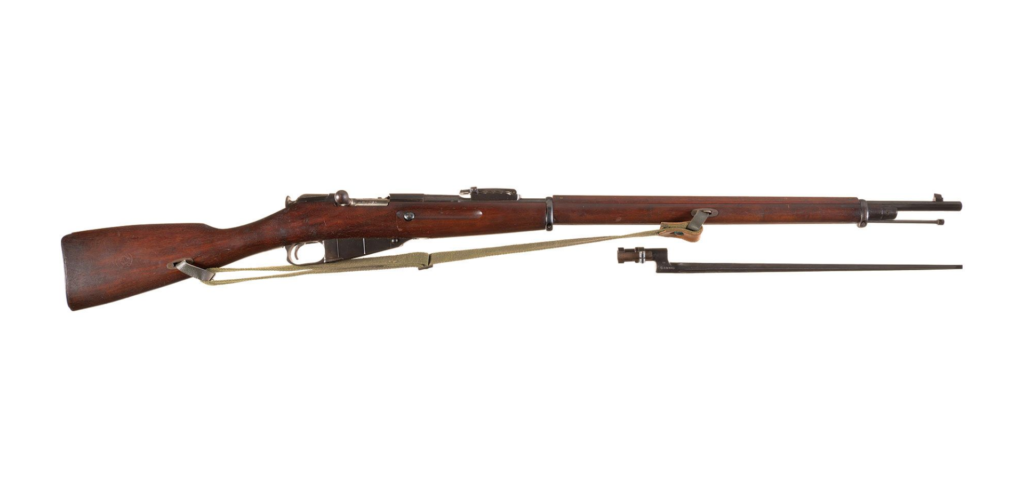
The Model 1891, also known as the Mosin Nagant, was the standard issue rifle of Imperial Russia during World War I. Adopted in 1891 and issued to Russian forces beginning in 1893, the rifle is chambered in 7.62x54mmR, holds five rounds in an internal magazine, and can be loaded via stripper clips. When war began, Russian manufacturers were not able to keep up with the demand for rifles. As combat on the Eastern Front intensified, the Russian Army was loosing approximately 200,000 rifles per month due to damage and enemy forces capturing Russian troops.5
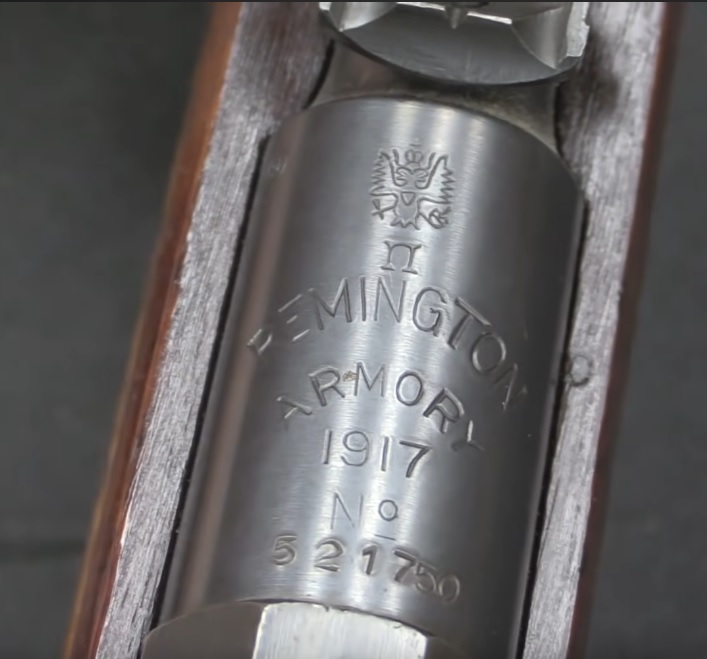
To keep their forces supplied with rifles, the Imperial Russian government contracted Remington, an American firearms manufacturer, to produce M1891 rifles. Of the 1.5 million rifles contracted with Remington, only 513,138 were produced and delivered to the Imperial Russian Government by November 1917, since the Russian Revolution prevented the further production and delivery of the rifles.6
Left: An Imperial Russian crest on a Remington produced Mosin Nagant. Image Source: Forgotten Weapons
The United States Government acquired 278,950 M1891 rifles through contracts with American manufacturers, and claimed 1,099 of the undelivered Remington rifles. A majority of these rifles were utilized by two American task forces, AEF North Russia and AEF Siberia. These groups operated in Russia in 1918 and 1919 as part of an Allied coalition in response to the Russian Revolution. However, some of these Russian rifles made their way to SATC units, as shown through War Department memos, which refer to the rifles as “Rifles, Russian.”7

Right: American troops in Russia, exact date unknown. Note the stacked Mosin Nagants in the center. Image Source: National Archives
Imperial German Gewehr 98
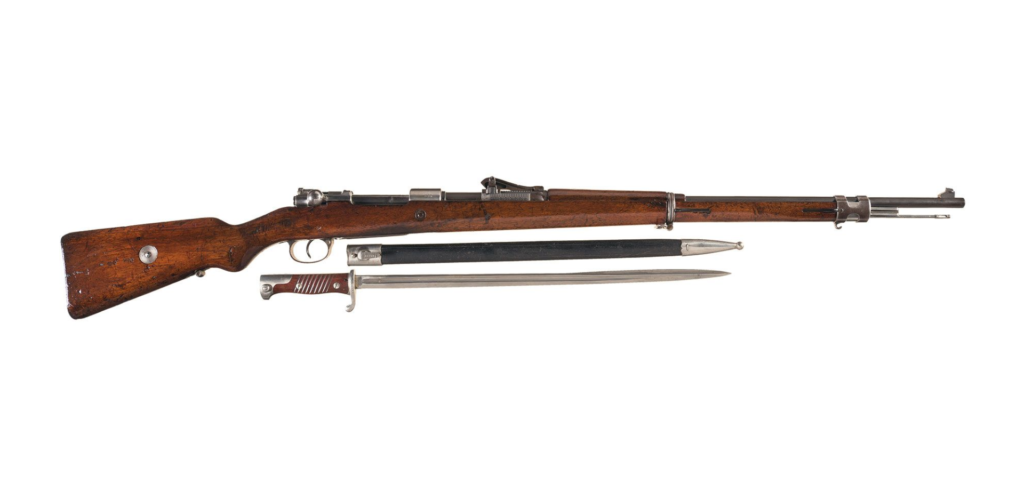
Created by famous German weapons designer Paul Mauser and adopted by the German Empire in 1898, the Gewehr 98 served as the primary infantry rifle of Germany during World War I. Chambered in 8mm Mauser with a five round internal magazine, the Gewehr 98 was a reliable, durable, and extremely safe for soldiers.8 Variations of the rifle would be used by the Weimar Republic in the interwar period and a cut down version of the rifle, the Karabiner 98K, would be used as the standard rifle for Nazi Germany during World War II.
Notes:
- Memo from Major Towner to Major Nichols dated November 9, 1918, Box SF047, Folder SATC Correspondence 1918 Nov, World War I Students’ Army Training Corps (SATC) and Training Camps Records, 1917-1919, Office of the Superintendent, administrative subject files, Virginia Military Institute Archives, Lexington, VA; Telegram from Major Nichols to Major Towner dated November 11, 1918, Box SF047, Folder SATC Correspondence 1918 Nov, World War I Students’ Army Training Corps (SATC) and Training Camps Records, 1917-1919, Office of the Superintendent, administrative subject files, Virginia Military Institute Archives, Lexington, VA.
- Bruce N. Canfield, “The Krag-Jorgensen: America’s First Bolt-Action Service Rifle,” American Rifleman: An Official Journal Of The NRA, April 9, 2021, https://www.americanrifleman.org/content/the-krag-jorgensen-america-s-first-bolt-action-service-rifle/.
- Luke Mercaldo, Allied Rifle Contracts in America: Mosin-Nagant, Mauser, Enfield, Berthier, Remington, Savage, Winchester (Greensboro, North Carolina: Wet Dog Publications, 2011), 134, 142-143.
- Memo from Captain Van Dusen to CEST Supply Officer dated November 26, 1918, National Archives RG 165 NM-84 Entry 412 Box 682, Folder 2.
- Luke Mercaldo, Allied Rifle Contracts in America: Mosin-Nagant, Mauser, Enfield, Berthier, Remington, Savage, Winchester (Greensboro, North Carolina: Wet Dog Publications, 2011), 12, 22, 54.
- Luke Mercaldo, Allied Rifle Contracts in America: Mosin-Nagant, Mauser, Enfield, Berthier, Remington, Savage, Winchester (Greensboro, North Carolina: Wet Dog Publications, 2011), 29, 33.
- Luke Mercaldo, Allied Rifle Contracts in America: Mosin-Nagant, Mauser, Enfield, Berthier, Remington, Savage, Winchester (Greensboro, North Carolina: Wet Dog Publications, 2011), 46.
- Martin K. Morgan, “At The Range: Gewehr 98,” American Rifleman: An Official Journal Of The NRA, October 17, 2020, https://www.americanrifleman.org/content/at-the-range-gewehr-98/.